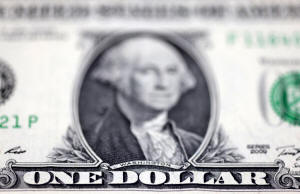Dollar rises as case for U.S. rate hikes firms
 Send a link to a friend
Send a link to a friend
 [October 10, 2022] By
Tom Westbrook and Harry Robertson [October 10, 2022] By
Tom Westbrook and Harry Robertson
LONDON/SYDNEY (Reuters) - The dollar inched
higher on Monday as investors set their sights on inflation data later
in the week which is expected to show that price pressures remain
strong.
Meanwhile, sterling slipped for the fourth straight session even after
the Bank of England (BoE) expanded its support for markets.
U.S. data due on Thursday is forecast to show headline inflation came in
at a hot 8.1% year-on-year rate in September, but down from 8.3% in
August. Core inflation is expected to have risen to 6.5%, from 6.3%
previously.
Unemployment unexpectedly fell in the U.S. last month, data showed last
week, adding to concerns that wage pressures and inflation will stay
high and pushing up bond yields.
Westpac strategist Sean Callow said the data and rising yields in
response was a "robust combination for the dollar".
"It's further evidence that the U.S. economy is not cratering," he said.
"It just feeds into the notion that the Fed is going to spend the next
three weeks saying the same thing about interest rates."

The U.S. dollar index was up 0.33% at 113.16, off lows around 110 last
week and creeping back toward last month's 20-year high of 114.78. The
euro was down 0.39% to $0.9694.
In Britain, the Bank of England attempted to ease concerns about the end
of its emergency bond-buying scheme by raising the maximum purchase
limit and launching measures to ease liquidity pressures on banks.
[to top of second column] |

U.S. Dollar banknote is seen in this
illustration taken July 17, 2022. REUTERS/Dado Ruvic/Illustration

UK markets went into a tailspin in late September after the
government unveiled a plan to slash taxes and ramp up borrowing. The
pound tumbled and the BoE was forced to intervene to prop up bond
markets.
The BoE said it was prepared to buy as much as 10 billion pounds
($11.07 billion) of gilts on Monday, double the previous limit.
Sterling slipped for a fourth straight session despite the BoE's
move. It was last down 0.37% to $1.1052, although it remained well
above September's record low of $1.0327.
Geopolitical tensions and higher oil prices also caused renewed
nervousness about growth, pushing investors back towards the dollar.
Markets were waiting to see how the Kremlin might respond to a blast
that hit Russia's only bridge to Crimea. Russia's rouble fell to 63
per dollar for the first time since July 7.
Japan's yen was little changed after drifting towards levels that
prompted authorities' intervention to support it last month. The yen
was last at 145.46 per dollar.
Chinese markets reopened after a week-long holiday. The yuan opened
at 7.10 per dollar before slipping to 7.1431. The Aussie fell 1.01%
to a more than two-year low of $0.6301.
(Reporting by Tom Westbrook and Harry Robertson, additional reportng
by Ankur Banerjee in Singapore. Editing by Sam Holmes, Ana Nicolaci
da Costa and Ed Osmond)
[© 2022 Thomson Reuters. All rights
reserved.]
This material may not be published,
broadcast, rewritten or redistributed.
Thompson Reuters is solely responsible for this content. |